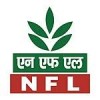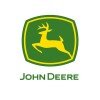Assistant Technician
20+ Assistant Technician Interview Questions and Answers

Asked in TK Elevator

Q. What is the function of an encoder in a lift?
The function of an encoder in a lift is to track the position of the elevator car and send signals to the control system.
Tracks the position of the elevator car
Sends signals to the control system
Helps in determining the speed and direction of the lift

Asked in TK Elevator

Q. What is the function of the drive in a lift?
The function of drive in a lift is to control the movement of the elevator car by powering the motor that moves the lift up and down.
Drives in lifts are responsible for controlling the speed and direction of the elevator car.
They power the motor that moves the lift up and down the shaft.
Modern lifts use variable frequency drives to control the speed and acceleration of the elevator car.
The drive system also ensures smooth and safe operation of the lift.
Asked in Epyllion Group

Q. Which chemicals are used in the textile industry?
Various chemicals are used in textile industry for processes like dyeing, printing, finishing, etc.
Dyes: used to color textiles
Bleaches: used to whiten textiles
Finishing agents: used to improve properties like softness, wrinkle resistance, etc.
Fixatives: used to set dyes in textiles
Surfactants: used to aid in wetting and penetration of dyes

Asked in TK Elevator

Q. Why is earthing necessary?
Earthing is necessary to prevent electrical shocks, protect equipment, and ensure safety in case of faults.
Earthing provides a path for fault currents to flow safely into the ground, preventing electric shocks to humans and animals.
It helps to stabilize voltage levels and protect electrical equipment from damage caused by lightning strikes or power surges.
Earthing also ensures proper functioning of protective devices like circuit breakers by providing a reference point for fa...read more

Asked in Rohan Builders

Q. How many inches are in one meter?
One meter is equivalent to approximately 39.37 inches, a standard conversion in measurement.
1 meter = 39.37 inches
To convert meters to inches, multiply the number of meters by 39.37.
Example: 2 meters = 2 * 39.37 = 78.74 inches.
In practical terms, a standard door height is about 2 meters or 78.74 inches.

Asked in Sanghi Industries

Q. What is the least count of a Vernier caliper in millimeters?
The Vernier caliper is used to measure the length or diameter of an object in millimeters.
The Vernier caliper has a main scale and a sliding Vernier scale.
To measure an object, align it between the jaws of the caliper and read the measurement on the Vernier scale.
The Vernier scale allows for more precise measurements than a regular ruler.
Example: If the main scale reads 10 mm and the Vernier scale aligns with the 0.5 mm mark, the measurement is 10.5 mm.
Assistant Technician Jobs



Asked in Epyllion Group

Q. How many type of Fabrics
There are many types of fabrics, each with unique characteristics and uses.
Natural fabrics (cotton, silk, wool)
Synthetic fabrics (polyester, nylon, spandex)
Blended fabrics (poly-cotton, rayon-polyester)
Specialty fabrics (velvet, denim, leather)
Technical fabrics (Gore-Tex, Kevlar)
Asked in Epyllion Group

Q. Why do we dye the sample first?
Dyeing samples first helps to ensure accurate and consistent results in testing and analysis.
Dyeing samples allows for easier visualization and identification under a microscope or other equipment.
It helps to distinguish between different components or structures within the sample.
Dyeing can enhance contrast and highlight specific features of interest.
It can also help to reveal any abnormalities or anomalies that may not be easily visible in the untreated sample.
Share interview questions and help millions of jobseekers 🌟


Asked in VE Commercial Vehicles

Q. What is your highest level of education?
Maine apni schooling local school se ki, phir college se science ki degree hasil ki aur ab technician ki training le raha hoon.
Maine apni schooling local school se ki, jahan maine science aur mathematics par focus kiya.
Uske baad, maine college se B.Sc. ki degree hasil ki, jismein maine biology aur chemistry ki specialization ki.
Abhi main ek technical training program mein enrolled hoon, jahan main practical skills seekh raha hoon.
Mujhe medical field mein interest hai, isliye ...read more

Asked in Jindal Steel and Power

Q. Electrical in operation
Electrical in operation
Understanding electrical systems and components
Knowledge of electrical safety procedures
Troubleshooting electrical issues
Repairing and maintaining electrical equipment
Reading and interpreting electrical diagrams
Using electrical testing equipment
Following electrical codes and regulations

Asked in Grasim Industries

Q. Maintenance of All Machining
Maintenance of all machining involves regular inspection, cleaning, lubrication, and repair of machines to ensure optimal performance.
Regularly inspect machines for signs of wear and tear
Clean machines regularly to prevent buildup of debris and dust
Lubricate moving parts to reduce friction and prevent damage
Repair or replace damaged parts as soon as possible to prevent further damage
Follow manufacturer's guidelines for maintenance and safety procedures
Train operators on prope...read more
Asked in Epyllion Group

Q. What is textile
Textile refers to any material made of interlacing fibers, such as fabrics, yarns, and threads.
Textiles can be made from natural fibers (cotton, wool, silk) or synthetic fibers (polyester, nylon).
Textiles are used in clothing, home furnishings, and industrial products.
The process of creating textiles involves spinning, weaving, knitting, or felting fibers together.

Asked in Jindal Steel and Power

Q. All equipment function
All equipment function is crucial for smooth operations and safety in the workplace.
Regular maintenance and inspections are necessary to ensure all equipment is functioning properly.
Promptly address any issues or malfunctions to prevent downtime and potential safety hazards.
Training employees on proper use and maintenance of equipment can help prevent breakdowns.
Utilizing equipment monitoring systems can help identify potential issues before they escalate.
Examples: Regularly ...read more

Asked in Jindal Steel and Power

Q. Wagon tippler sac function
Wagon tippler sac function is to unload bulk materials from railway wagons by tipping them over.
Wagon tippler sac is used in industries like mining, power plants, and steel plants.
It helps in unloading materials like coal, iron ore, and limestone efficiently.
The tipping mechanism of the wagon tippler sac allows the contents of the wagon to be emptied quickly and safely.
Regular maintenance and inspection of the wagon tippler sac are necessary to ensure smooth operation.

Asked in Larsen & Toubro Limited

Q. Types of schedule maintenance
Types of schedule maintenance include preventive maintenance, predictive maintenance, and corrective maintenance.
Preventive maintenance involves regularly scheduled inspections and tasks to prevent breakdowns (e.g. changing oil every 3,000 miles)
Predictive maintenance uses data and analytics to predict when maintenance is needed (e.g. monitoring equipment vibrations to detect potential issues)
Corrective maintenance is performed after a breakdown occurs to restore equipment to...read more
Asked in Coal Gasification Plant, JSPL,Angul

Q. Operation in Paddle feeder
Paddle feeder is a device used to control the flow of material into a process or machine by using paddles to push material along a conveyor belt.
Paddle feeders are commonly used in industries like power plants and mining to feed materials such as coal or ore into a system.
The paddles on the feeder can be adjusted to control the speed and amount of material being fed.
Proper maintenance and monitoring of paddle feeders are essential to ensure smooth operation and prevent breakd...read more
Asked in Coal Gasification Plant, JSPL,Angul

Q. Operation in wagon tippler
Wagon tippler is a mechanism used to unload materials from railway wagons by tipping them over.
Wagon tippler is used in industries like power plants, steel plants, and mining to unload bulk materials like coal, iron ore, and limestone.
The wagon is positioned on the tippler platform and then rotated to unload the materials into a hopper or conveyor belt.
The tipping operation is controlled by hydraulic or pneumatic systems for smooth and efficient unloading.
Regular maintenance ...read more

Asked in National Fertilizers

Q. Industry for tecnical
The technical industry encompasses a wide range of sectors that rely on specialized knowledge and skills to design, develop, and maintain various technologies.
Technical industry includes sectors such as IT, engineering, telecommunications, and manufacturing.
Professionals in the technical industry often work with complex systems, equipment, and software.
Continuous learning and staying up-to-date with advancements in technology are crucial in the technical industry.
Examples of ...read more

Asked in National Fertilizers

Q. Installations for the food
Installations for the food industry involve setting up equipment and systems for food production, processing, and storage.
Installing industrial ovens, mixers, and refrigeration units
Setting up conveyor belts and packaging machinery
Implementing food safety protocols and regulations
Ensuring proper ventilation and waste disposal systems
Training staff on equipment operation and maintenance
Asked in Coal Gasification Plant, JSPL,Angul

Q. Operation in stacker
Operation in stacker involves loading and unloading materials using a machine with a hydraulic lifting mechanism.
Stacker is used to lift and move heavy materials in warehouses or industrial settings.
Operators must be trained to safely operate the stacker and follow proper procedures.
Stacker can be electrically powered or manual, with different weight capacities and lift heights.
Common types of stackers include walkie stackers, reach stackers, and pallet stackers.

Asked in Sunbeam Auto

Q. Types of engine
There are two main types of engines: internal combustion engines and external combustion engines.
Internal combustion engines: gasoline engines, diesel engines
External combustion engines: steam engines
Other types: rotary engines, electric engines
Interview Questions of Similar Designations
Interview Experiences of Popular Companies








Reviews
Interviews
Salaries
Users

















